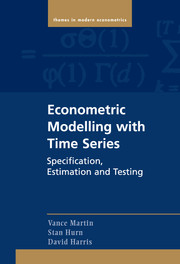Introduction
This chapter addresses time series models that are nonlinear in the variance. It transpires that the variance of the returns of financial assets, commonly referred to as the volatility, is a crucial aspect of much of modern finance theory, because it is a key input to areas such as portfolio construction, risk management and option pricing. In this chapter, the particular nonlinear variance specification investigated is the autoregressive conditional heteroskedasticity (ARCH) class of models introduced by Engle (1982). This model also represents a special case of heteroskedastic regression models discussed in Chapter 8 where lags of the dependent variable are now included as explanatory variables of the variance.
As in the case with nonlinear models in the mean, however, a wide range of potential nonlinearities can be entertained when modelling the variance. There are two other important approaches to modelling the variance of financial asset returns which are only briefly touched on. The first is the stochastic volatility model, introduced by Taylor (1982) and discussed in Chapters 9 and 12. The second is realised volatility proposed by Andersen, Bollerslev, Diebold and Labys (2001, 2003) which is only explored in the context of the MIDAS model of Ghysels, Santa-Clara and Valkanov (2005) in Exercise 10 of this chapter.
Statistical Properties of Asset Returns
Panel (a) of Figure 20.1 provides a plot of the returns of the daily percentage returns, yt, on the FTSE from 5 January 1989 to 31 December 2007, T = 4952. At first sight, the returns appear to be random, a point highlighted in panel (c), which shows that the autocorrelation function of returns is flat. Closer inspection of the returns reveals periods when returns hardly change (market tranquility) and others where large movements in returns are followed by further large changes (market turbulence).
